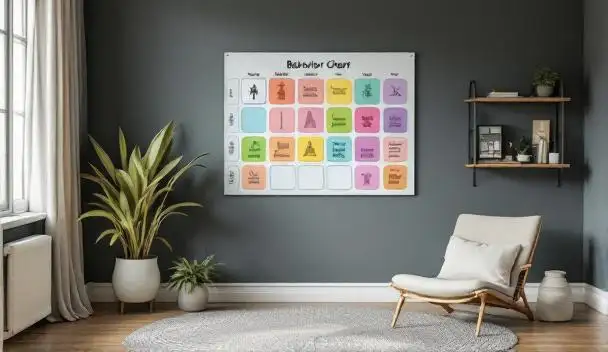Understanding the RBT Exam
Before embarking on the journey of becoming a Registered Behavior Technician (RBT), it is essential to understand the RBT Exam and the significance of RBT certification.

Overview of the RBT Exam
The RBT Exam is a computer-based examination that consists of 75 multiple-choice questions. The exam is designed to assess the understanding of fundamental behavior analysis principles and the ability to apply them in real-world scenarios [1]. It serves as a crucial step for individuals seeking to become certified RBTs and work in the field of behavior analysis.
Importance of RBT Certification
Obtaining RBT certification holds several benefits and is highly valued in the field of behavior analysis. It enhances job prospects, increases credibility and trust among employers, colleagues, and clients, and signifies a commitment to maintaining ethical standards and delivering high-quality services.
RBT certification demonstrates proficiency in the application of Applied Behavior Analysis (ABA) therapy techniques. It is widely accepted by Board Certified Behavior Analysts (BCBAs) and clinics, making it an essential credential for aspiring professionals in the field. The certification ensures that therapists are capable of professionally administering ABA therapy under supervision, providing effective support for individuals with autism and related conditions [2].
In addition to the personal and professional benefits, RBT certification is often a requirement for employment in mental health facilities, hospitals, and other settings that provide services to individuals with autism and similar conditions. The certification serves as evidence of a therapist's qualifications and competence in implementing treatment plans and working with individuals with diverse needs [3].
By understanding the overview of the RBT Exam and recognizing the importance of RBT certification, aspiring RBTs can embark on their journey with confidence and work towards making a positive impact in the lives of individuals with autism and related conditions.
Key Areas of the RBT Exam
The RBT exam assesses the understanding and application of fundamental behavior analysis principles in real-world scenarios. To excel in this exam, it is crucial to focus on key areas that are integral to becoming a competent Registered Behavior Technician (RBT). These areas include behavior measurement and assessment, skill acquisition and behavior reduction, documentation and reporting, and professional conduct and scope of practice.
Behavior Measurement and Assessment
Behavior measurement and assessment are essential aspects of the RBT role. RBTs must be proficient in collecting and recording accurate data to track clients' progress and evaluate the effectiveness of behavior interventions. Understanding different measurement techniques, data collection methods, and graphing skills are critical in this domain. Familiarity with terms like frequency, duration, latency, and inter-response time is also important.
Skill Acquisition and Behavior Reduction
Skill acquisition and behavior reduction form the core of an RBT's responsibilities. RBTs must be knowledgeable about evidence-based teaching strategies, reinforcement techniques, prompting procedures, and task analysis to effectively teach new skills to individuals with autism and other developmental disabilities. Additionally, understanding behavior reduction strategies, such as functional behavior assessments and behavior intervention plans, is crucial for addressing challenging behaviors.
Documentation and Reporting
Accurate documentation and reporting are vital in the field of behavior analysis. RBTs are responsible for maintaining detailed records of client sessions, including progress notes, session summaries, and behavior data. They should have a strong grasp of writing objective and concise reports that effectively communicate client progress, behavior changes, and any concerns to the supervising Board-Certified Behavior Analyst (BCBA) or behavior consultant.
Professional Conduct and Scope of Practice
Professional conduct and maintaining ethical standards are paramount for RBTs. They must adhere to the Behavior Analyst Certification Board's (BACB) Professional and Ethical Compliance Code for Behavior Analysts. RBTs should understand their scope of practice, maintain confidentiality, seek guidance from supervisors when necessary, and engage in ongoing professional development to stay updated with current best practices in the field.
By focusing on these key areas, aspiring RBTs can effectively prepare for the exam and demonstrate their competence in behavior analysis. It is recommended to thoroughly review the RBT Task List provided by the BACB, as it outlines the specific skills and knowledge expected of RBTs. Understanding the exam format, rules, and guidelines is also crucial for success. Remember to practice answering multiple-choice questions and allocate sufficient time for rest and maintaining focus during the exam.
Preparing for the RBT Exam
To increase your chances of success on the Registered Behavior Technician (RBT) exam, thorough preparation is key. This section will explore some essential steps to help you get ready for the exam.
Study Resources for the RBT Exam
A valuable resource to consider is the RBT Exam Study Guide 2023 and 2024 by Mometrix Test Preparation. This guide is specifically designed to provide critical information on concepts, procedures, principles, and vocabulary expected by the Behavior Analyst Certification Board (BACB). It covers all the necessary test sections and includes detailed content essential for exam success. The guide is structured logically and written in a way that is both technically accurate and accessible, ensuring that you can easily navigate through the material [5].
In addition to the comprehensive content coverage, the RBT Exam Study Guide also provides ample practice questions. Answer explanations are included to clarify the underlying principles and reasoning, enhancing your comprehension and preparation for the actual exam.
Creating a Study Schedule
Establishing a study schedule is crucial for effective exam preparation. By creating a structured plan, you can allocate sufficient time to cover all the necessary material. Consider your personal commitments and set aside dedicated study periods that align with your learning style and preferences. Breaking down the content into manageable sections and assigning specific topics to each study session can help you stay organized and focused. Be sure to include regular breaks to maintain productivity and prevent burnout.
Utilizing Practice Exams
One of the most effective ways to prepare for the RBT exam is by utilizing practice exams. These exams simulate the actual testing conditions and allow you to familiarize yourself with the format and types of questions you may encounter. The Mometrix RBT Exam Study Guide mentioned earlier includes practice questions that can aid in your preparation process. By practicing answering multiple-choice questions, you can develop strategies for efficient time management, improve your understanding of the subject matter, and identify areas that require further review.
Remember to review the explanations provided for each practice question to gain a deeper understanding of the concepts and principles being tested. This will help reinforce your knowledge and enhance your ability to apply it during the actual exam.
By utilizing study resources such as the RBT Exam Study Guide, creating a study schedule, and incorporating practice exams into your preparation, you can increase your confidence and readiness for the RBT exam. Remember to stay focused, persevere through the study process, and seek additional support or guidance if needed. With dedication and effective preparation, you can position yourself for success on the RBT exam.
Taking the RBT Exam
When it comes time to take the Registered Behavior Technician (RBT) exam, it's important to familiarize yourself with the exam format, rules, and guidelines to ensure a successful experience. Understanding the structure of the exam, the rules to follow, and the scoring process can help you approach the exam with confidence.
Exam Format and Structure
The RBT exam consists of over 80 multiple-choice questions, with over 70 questions contributing to the final score. The exam assesses competency in Applied Behavior Analysis (ABA) therapy through a set task list provided by the Behavior Analyst Certification Board (BACB). You will have one hour and 30 minutes to complete the exam.
Exam Rules and Guidelines
On exam day, it is important to arrive at the testing location at least 30 minutes early with two forms of identification. It is essential to review the specific identification requirements provided by the testing center. During the exam, no food or beverages are allowed. It is recommended to manage your time effectively to ensure all questions are answered within the allocated time frame.
Scoring and Certification Process
The RBT exam is taken on a computer and questions are presented in a multiple-choice format. The exam measures proficiency in ABA therapy through the task list outlined by the BACB. After completing the exam, you will receive immediate notification of your exam results. Passing grades result in certification being sent via email within a week.
To pass the RBT exam, a score of 200 or more out of 300 is required. The exam consists of 75 multiple-choice questions that need to be answered within 90 minutes. The questions are divided into three sections: measurement, assessment, and intervention. A passing score requires at least 80% correct answers.
It's important to note that the RBT exam is scored based on the number of correct answers out of the total questions, with each question carrying one point. There is no penalty for guessing. Results are typically available immediately after completion, with certification processing within two weeks for passing candidates.
By understanding the exam format, following the rules and guidelines, and being aware of the scoring process, you can approach the RBT exam with confidence. Remember to prepare thoroughly, manage your time effectively, and remain focused during the exam to increase your chances of success.
Tips for Success on the RBT Exam
Preparing for the RBT exam requires a strategic approach to ensure success. Here are some valuable tips to help you excel on the exam:
Thoroughly Review the RBT Task List
The RBT Task List is a comprehensive document that outlines the skills and knowledge expected of Registered Behavior Technicians (RBTs). It serves as a blueprint for the exam and provides guidance on the topics you need to study. To prepare effectively, download the RBT Task List from the Behavior Analyst Certification Board (BACB) website and review it thoroughly. Familiarize yourself with each task and its associated subtasks, ensuring that you have a solid understanding of the content.
Practice Answering Multiple-Choice Questions
The RBT exam consists of 75 multiple-choice questions that need to be answered within 90 minutes. To enhance your performance, practice answering multiple-choice questions under simulated test conditions. This will help you become familiar with the exam format and improve your ability to select the correct answers efficiently. Utilize study guides, online resources, and practice exams to simulate the exam experience and identify areas that require further review or improvement. By practicing regularly, you will build confidence and sharpen your test-taking skills.
Get Adequate Rest and Stay Focused
On the day of the exam, it's crucial to be well-rested and focused. Ensure you get a good night's sleep before the exam to optimize your cognitive functioning and maintain alertness during the test. Adequate rest will help you stay focused and retain information more effectively. Additionally, make sure to eat a nutritious meal before the exam to fuel your brain and provide the energy needed for optimal performance.
Remember to manage your time wisely during the exam. Read each question carefully, and if you encounter a challenging question, don't dwell on it for too long. Instead, mark it and move on to ensure you have enough time to answer all the questions.
By following these tips and utilizing effective study materials, such as textbooks, online courses, and practice exams, you can enhance your preparation for the RBT exam. Stay dedicated, maintain a positive mindset, and approach the exam with confidence. Good luck on your journey to becoming a Registered Behavior Technician!
References
[1]: https://www.yellowbusaba.com/post/rbt-exam-study-guide
[2]: https://www.crossrivertherapy.com/rbt/exam-study-guide
[5]: https://greenbeanbookspdx.indielite.org/book/9781516723768
[6]: https://btexamreview.com/free-rbt-exam-practice-questions/












